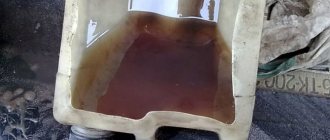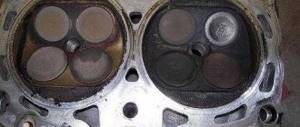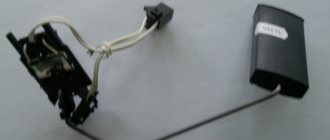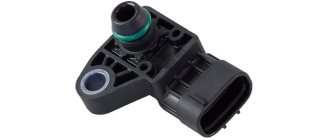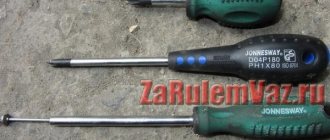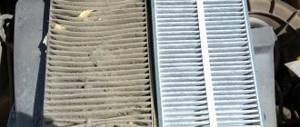The adsorber is designed to capture fuel vapors and prevent them from entering the atmosphere. One of the elements of this system is the adsorber purge valve. Let's consider the main malfunctions of this part, as well as ways to eliminate them.
Why do you need a fuel vapor recovery system?
Gasoline belongs to the category of highly volatile hydrocarbons, and its vapors are highly volatile. While the engine is running, the gasoline in the tank heats up, at least a little. In addition, it sways while moving. These processes accelerate the evaporation of fuel, creating increased pressure in the container. Previously, car tanks had only a primitive ventilation system, which simply released vapor through special openings into the atmosphere. Naturally, this caused some harm to the environment, and there was no talk of fuel economy at all.
The introduction of a gasoline vapor recovery system made it possible to solve both of these problems simultaneously. With it, fumes are not wasted into the environment, but are used for their intended purpose, i.e. to ensure engine operation.
What does a vapor recovery system consist of?
The management system in Kalina consists of the following elements:
- fuel outlet and return lines;
- separator;
- adsorber;
- canister purge valve.
As you can see, the system is quite simple. Let's consider the purpose of each of its elements separately.
As for fuel lines, these are simply tubes through which gasoline vapors leave the tank, and also through which fuel returns back to it. The separator is used to collect fuel vapors and condense them. The adsorber is designed to capture those vapors that did not have time to turn into a liquid state. The adsorber purge valve (“Kalina”) is necessary to direct gasoline vapors to the intake manifold receiver.
Principle of operation
The adsorber itself allows fuel vapors to accumulate in a special place - the separator. As a result, gasoline turns into condensate and goes back to the tank. Vapors that have not undergone treatment go through double valves of the system, one of which prevents fuel from spilling out during an emergency (for example, a coup), and the second “is engaged” in regulating the pressure in the tank. The adsorber purge valve is located under the hood, and the adsorber itself is located on the tank. The control unit ensures the normal operation of the entire system: it ventilates and removes condensation.
Article on the topic: Why lamps burn out
How the system works
Fuel vapor rises and concentrates at the top of the tank. When the pressure in the tank rises, vapors enter the fuel line and from there into the separator. There the process of cooling and condensation occurs. Some of the vapor settles on the walls of the separator, turns back into a liquid state and returns through the return fuel line to the tank. The other part, which did not have time to condense, enters the adsorber. The device is a regular plastic jar filled with crushed activated carbon. Vapors accumulate in the adsorber until the engine starts.
When we try to start the engine, the solenoid valve for purge the adsorber (“Kalina”) comes into operation. The signal to open it is supplied from the electronic engine control unit. At the moment of startup, the valve opens and gasoline vapors are supplied through the pipeline into the intake manifold receiver. Thus, fumes, which no one had even taken into account before, help save fuel and also do not pollute the environment.
The principle of operation of the fuel system
An adsorber is a small part in a car designed to collect all gasoline vapors. The system allows fuel vapors to accumulate in a specially designed place called a separator, converting them into condensate and releasing them into the gas tank.
Valve on car
Untreated gasoline vapors pass through double system valves. The first valve is gravity and serves to protect fuel from leaking out of the gas tank during an emergency vehicle rollover. The second valve regulates the pressure created in the fuel tank.
Passing through the entire fuel system, gasoline vapors reach the adsorbing chamber and are absorbed by the activated carbon contained in it. When the engine starts, the purge valve starts to operate. If it is faulty, this may result in a loss of power from the power unit and increased fuel consumption.
The adsorber purge valve is installed inside the device filled with activated carbon. The device itself is located on the gas tank. The purge system is designed to ensure that everything functions correctly and without interruption. Ventilation and condensate removal are the main purpose of this electromechanical unit.
Valve operating phases
When the engine is turned off, the adsorber purge valve (“Kalina”) is de-energized and is in the closed position. In other words, the vapor recovery system is blocked on the power unit side. At this time, gasoline vapors are concentrated in the adsorber under pressure. When the engine starts, the electronic control unit supplies power to the valve, activating the electromagnet. It opens the shut-off device and gasoline vapors are naturally sucked into the intake manifold. When the engine stops running, the valve is de-energized and shuts off the pipeline. Gasoline vapors stop entering the receiver. This is how the adsorber purge valve (“Kalina”) works.
Some modern foreign-made cars are equipped with more complex devices. Their design is supplemented with sensors that allow the electronic unit to additionally receive information about the saturation of the adsorber with fuel vapor, estimate the percentage of air and, based on the data obtained, control the fuel supply to the injector.
How to understand a malfunction of the absorber
Speaking about the adsorber valve, the symptoms of a malfunction will be fairly standardized, which makes it possible to obtain a fairly detailed description. So, signs of a malfunctioning adsorber valve:
– Constant smell of gasoline in the cabin.
This fact is caused by improper circulation of gases, which may have a certain leakage. Due to the proximity of the system to the air filter, odors freely penetrate into the cabin.
Signs of a malfunction of the canister purge valve on the Grant include this sound, familiar to all Grant owners.
(to fix this, you can tighten the nut, or you can purchase a new one; fortunately, the Lada Granta adsorber valve, the price of which is low, is available for purchase)
– Increased fuel consumption.
An inoperative adsorber ventilation valve is not able to control the correct path of gases, which does not allow them to be processed in the form of combustion.
– The amount of harmful substances released through the system increases.
Speaking about how the canister purge valve works and why, do not forget that increasing the environmental performance of a car is a primary task, which can be disrupted if the canister purge solenoid valve does not function correctly.
- Sounds similar to some hissing.
Strong hissing in the adsorber hose, the cause of which is the accumulation of gases, is not uncommon. Since modern requirements for cars do not allow gas emissions while parked, a certain accumulation is acceptable.
– Characteristic sounds coming from the gas tank.
Speaking about the Lada Granta adsorber, the malfunction of which is always characterized by extraneous sounds coming from the gas tank, it must be said that they are the most typical sign of a breakdown. In this case, the adsorber sensor may not give any indicators of malfunction, therefore, it must also be replaced.
Thus, signs of a malfunction of the Lada Grant canister purge valve are quite easy to identify. In addition, they are detected when simply refueling the car, which necessarily requires opening the gas tank cap.
Signs of a malfunctioning canister purge valve
The adsorber purge valve (Lada Kalina), like any other electromechanical part, can fail. Signs of its malfunction are:
- the appearance of the message CHECK on the dashboard (during testing, an error code P0441 is detected, corresponding to a malfunction of the gasoline vapor recovery system);
- floating engine speed at idle;
- unstable engine operation while driving;
- increased fuel consumption;
- increase in CO2 level in exhaust gases.
In addition, in Lada Kalina cars, a malfunction of the canister purge valve can manifest itself in the appearance of a characteristic smell of gasoline in the cabin. This phenomenon occurs when the pressure in the vapor recovery system exceeds design values.
Diagnosing the valve is not difficult, but you need to know where to look for it.
Signs of a malfunction of the control unit
First, start the engine: at idle or in cold weather, you will hear a characteristic, barely audible chirping sound. It indicates that the valve is working properly. In order not to confuse this sound with the noise from a working timing belt, sharply press the gas. The character of the chatter should not change. The following signs indicate a malfunction of the control unit:
- lighting of the CHECK signal on the instrument panel;
- determination of error PO441 during testing;
- increased gasoline consumption;
- unstable operation of the power unit when driving;
- unstable idle;
- increase in CO2 content;
- a hissing sound when unscrewing the tank lid (a vacuum has appeared);
- the appearance of a fuel smell in the cabin.
Article on the topic: What is break-in
Valve check
If you suspect that the device is out of order, rush to diagnose it and, if necessary, replace it. No, its failure does not have critical consequences. The car has driven and will continue to drive, it’s just that the engine will work in emergency mode, and it will consume more fuel. But how to check the canister purge valve on Kalina on your own?
This process will not take much time. And all you need in terms of tools is a multimeter, a screwdriver and a pair of wires. We lift the hood and find the valve. Next, disconnect the wiring harness from it. To do this, release the block fastening clamp. First of all, let's check whether voltage is supplied to the valve. Turn on the multimeter in voltmeter mode. We connect its black probe to the ground of the car, and the red one to connector “A” on the wiring harness block. Turn on the ignition and look at the instrument readings. The voltage at the terminals must match the battery voltage. If it is not there at all, or it is much smaller, the problem is not in the valve, but much deeper.
If the voltage is okay, we move on. Remove the purge valve. To do this, use a screwdriver to loosen the fastenings of the hose clamps and remove them from the fittings. Slide the valve up the bracket and remove it.
Testing the device involves connecting it directly to the battery terminals. We take one wire and connect it to the positive terminal of the purge valve. We connect the second wire to the negative wire and connect both wires to the corresponding battery terminals. At this moment, a click should be heard, indicating that the electromagnet has worked. In this case, the adsorber purge valve can be considered working. If nothing happened when connecting, the device will have to be changed.
How is the valve checked?
To carry out this procedure you need:
- Disconnect the block with wires, and then visually check the condition of the contacts. If you find oxides, immediately treat the contact terminals with special cleaning agents.
- Then remove the valve and measure the resistance of its winding with a multimeter; it should be between 20 and 30 ohms. If a short circuit or winding break occurs, replace the part.
- Insulating one of the valve outlets with a PVC tube will help to avoid a short circuit. Apply 12 V from the battery to the contact terminals; their opening should be accompanied by a click. Then the test will need to be repeated by creating a vacuum in the valve using a rubber bulb.
Changing the purge valve
Trying to repair a valve is a thankless task. And it's inexpensive. Depending on the modification, the price can range from 350 to 600 rubles.
Replacing the adsorber purge valve on Kalina after checking and dismantling it is carried out using one tool - a screwdriver with a Phillips bit.
The procedure for installing the device is as follows. First of all, we connect the gasoline vapor supply hoses to the valve fittings. Using a screwdriver, tighten the screws securing the clamps. We install the valve on the bracket and slide it along the guides down until it stops. Connect the wiring harness. Turn on the ignition and start the engine. If its performance has noticeably improved, the speed has become stable, and the error message has disappeared from the dashboard, then we have done everything correctly.


